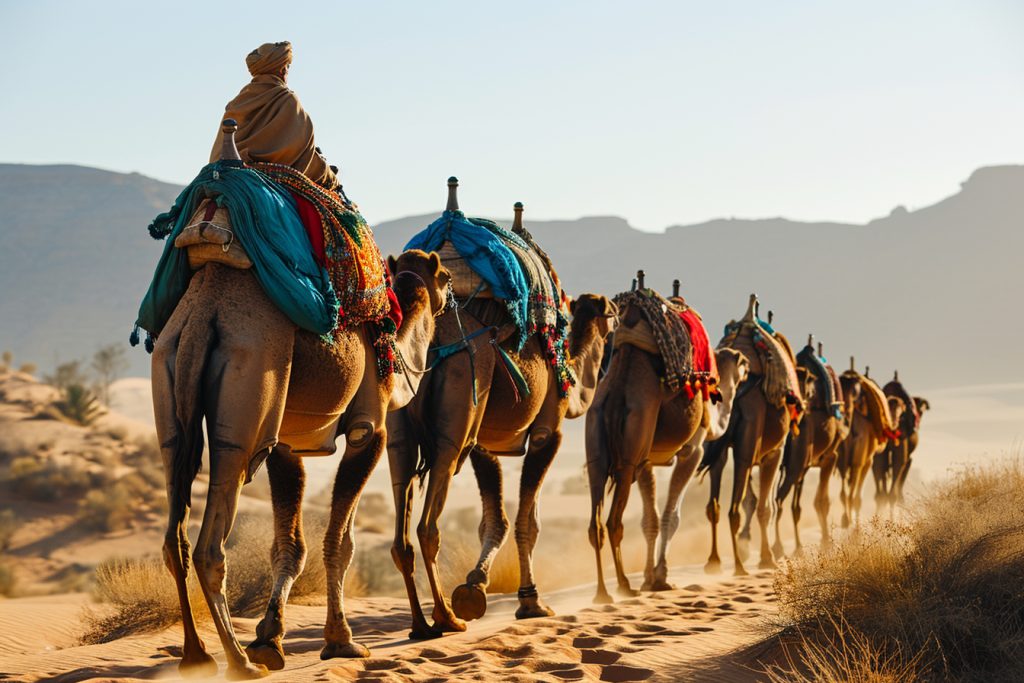The Silk Road is not just a single path but an intricate tapestry of trade routes that once stitched together empires and civilizations. It is a tale of humanity’s relentless quest for exchange – not just of goods, but also of ideas, cultures, and technology. Traversing rugged landscapes and perilous territories, the Silk Road was the internet of the ancient world – a network that connected continents and allowed information and merchandise to flow across nations. As we embark on this journey to unravel the Silk Road saga, we delve into the mysteries, the stories, and the enduring impact of one of history’s most fascinating trade phenomena.
Unraveling the Silk Road Mystery
The Silk Road, evoking images of desert caravans and opulent spices, is shrouded in an aura of mystique and bygone splendor. From the cultivation of silk in China to its coveted status in Rome, the road owes its name to the lucrative trade in this luxurious fabric. However, it wasn’t just a single road; the Silk Road comprised a labyrinth of routes, spanning thousands of miles across continents, encompassing diverse landscapes like the celestial mountains of Central Asia to the relentless dunes of the Gobi Desert. Its existence as a vital artery for trade and cultural exchange became the foundation of the road’s legendary status, often romanticized in literature and historians’ accounts.
Peeling back the layers of time, we discover that the Silk Road was far more than just an economic conduit. It was a melting pot of religions, art movements, and scientific knowledge, propelled by the footsteps of traders, pilgrims, soldiers, and nomads. As tangible evidence fades into the sands of time, modern discoveries continue to unlock secrets of the Road—ancient manuscripts, hidden cities buried by the desert, and artifacts narrating untold stories of life along this ancient highway. Each relic and whisper from the past helps us piece together the puzzle of this incredible network that once brought the East and West into close contact.
Caravans and Commodities: A Tale Told
Imagine the caravans that once traversed the Silk Road: dozens of camels loping in line, their silhouettes imprinting on the horizon at dawn and dusk. These caravans were the lifeblood of Silk Road commerce, carrying not only silk but also a cornucopia of other commodities like gold, ivory, exotic animals, and precious spices. Merchants and adventurers risked their lives braving bandits and the elements, driven by the promise of wealth and glory. The exchange of goods, however, was merely the tip of the iceberg. Ideas and technologies hitched rides with these commodities, leading to innovations such as gunpowder, paper, and the compass spreading across continents.
The barter of goods also brokered an exchange of cultures and languages among the diverse groups that mingled in these caravans. Iranians, Indians, Turks, and a multitude of other ethnic groups haggled and chatted in the trade hubs that dotted the routes. Trade outposts like Kashgar and Samarkand burgeoned into flourishing centers of commerce, where languages and customs intermingled as freely as the traded goods. The artifacts that survive from these hubs tell the tale of this grand exchange; Chinese porcelain unearthed in Persia, Persian silverwork found in the heart of China, and Roman coins that journeyed all the way to Japan.
Echoes of Ancient Marketplaces
The thrum of activity in ancient Silk Road marketplaces must have been electric. As we conjure up images of these bazaars, we can almost hear the cacophony of vendors hawking their wares, the chatter of bargaining, and the shuffle of feet on dusty stones. These markets were the pulsating hearts of Silk Road cities, where people from unimaginable distances came together, creating a vibrant cultural mosaic. Through the goods exchanged, the aromas present, and the myriad of languages spoken, these marketplaces captured the essence of the Silk Road’s role as the crossroads of the ancient world.
Preserved through time in literature, art, and archaeology, these echoes offer a glimpse into the dynamics of ancient trade and civilization interplay. Tantalizing clues about life along the Silk Road relayed by travelers like Marco Polo provide a narrative connection to these marketplaces. Scientists and historians today continue to be guided by these echoes, using advanced technologies like satellite imagery and DNA analysis to discover and understand the nuances of these once-thriving hubs. Just like their forebears, today’s explorers are piecing together the story of the Silk Road, driven by a similar curiosity to understand the depth and breadth of human connectivity.
The Silk Road saga is a timeless narrative that holds a mirror to the essence of human interaction and ingenuity. Surpassing mere trade routes, it reflects our innate drive to reach out, to discover the unfamiliar, and bind distant lands together. Though the camels have since vanished and the caravans are long gone, the legacy of the ancient Silk Road continues to inspire and teach us about the power of cultural and economic exchange. As we trace these paths of old, we are reminded of the indelible footprint that this grand network left, not only on the dusty trails of history but also on the diverse tapestry of our modern world.









